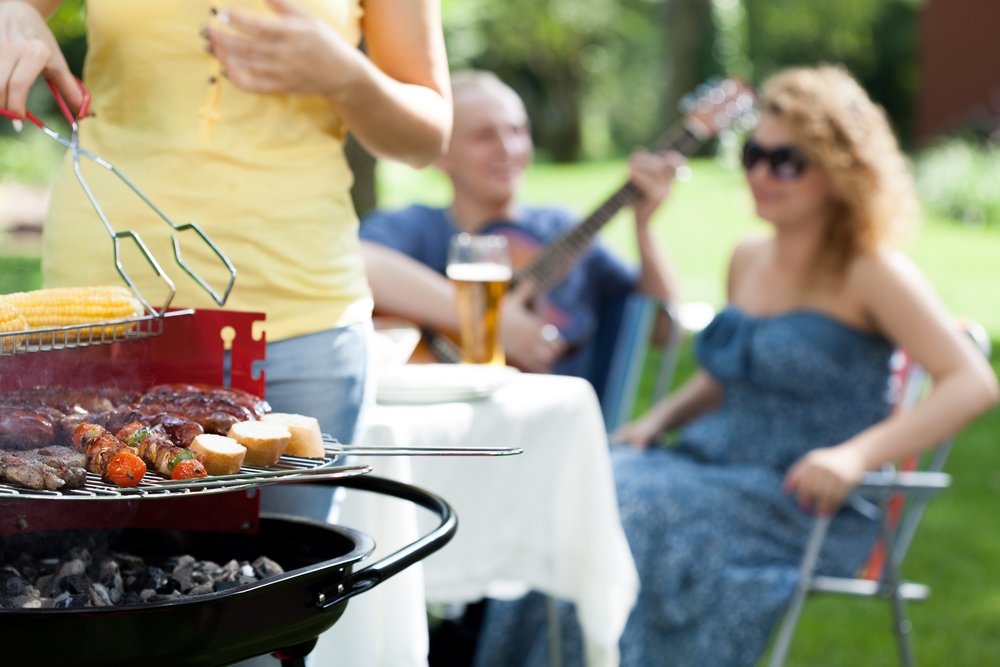Introduction
Outdoor cooking is not just a summer activity; it’s a culinary journey that transcends seasons. From the smoky aroma of grilled meats to the rustic charm of campfire meals, cooking outdoors offers a sensory experience that indoor kitchens can’t replicate. This expanded ultimate guide aims to be your comprehensive resource for mastering the art of outdoor cooking, delving into various cooking methods, essential tools, safety precautions, and culinary tips that will elevate your outdoor feasts.
The Different Methods: A World of Flavors
Grilling: The Quintessential Method
Grilling is perhaps the most accessible and popular form of outdoor cooking. It’s versatile, quick, and imparts a smoky flavor to your food. Whether you’re grilling burgers, seafood, or even fruits and vegetables, the possibilities are endless.
Types of Grills
- Charcoal Grills: Offer an authentic smoky flavor.
- Gas Grills: Convenient and easy to control.
- Electric Grills: Suitable for places where open flames are restricted.
Smoking: The Low and Slow Technique
Smoking is the culinary equivalent of fine art. It requires patience and skill but rewards you with deeply flavorful and tender meat. From briskets and ribs to smoked fish, this method opens up a new world of taste.
Types of Smokers
- Pellet Smokers: Use wood pellets and offer precise temperature control.
- Offset Smokers: Traditional and ideal for large quantities.
- Electric Smokers: Convenient but may lack authentic smoky flavor.
Open Fire Cooking: Back to Basics
There’s something primal and satisfying about cooking over an open flame. Whether you’re roasting marshmallows or cooking a full meal on a campfire, the rustic flavors are incomparable.
Outdoor Ovens: Beyond BBQ
Outdoor ovens like pizza ovens and tandoors offer a different avenue for outdoor culinary adventures. From artisanal pizzas to tandoori chicken, these ovens expand your outdoor cooking repertoire.
Rotisserie Cooking: The Art of Rotation
Rotisserie cooking involves slow-cooking meat on a spit. The constant rotation ensures even cooking and basting, resulting in juicy and flavorful dishes.
Essential Tools: The Gear You Need
Cooking Utensils
- Long-Handled Tongs: Essential for flipping and handling hot food.
- Spatula: Ideal for delicate items like fish.
- Grill Brush: For cleaning grill grates.
Cookware and Accessories
- Cast Iron Pans: Perfect for cooking smaller or chopped foods.
- Grill Baskets: Great for grilling vegetables or fish.
- Skewers: For making kebabs or grilled fruit.
Thermometers and Timers
- Instant-Read Thermometer: For checking the internal temperature of meats.
- Timer: To keep track of cooking times and avoid overcooking.
Preparing Your Cooking Space: Safety First
Location and Ventilation
Ensure your cooking setup is far from flammable materials like wood, fabric, or gas lines. Make sure the area is well-ventilated, especially if you’re using charcoal or wood.
Stable Surface and Fire Safety
Place your cooking apparatus on a flat, stable surface to prevent accidents. Always have fire safety equipment like a fire extinguisher or a bucket of sand nearby.
Food and Ingredient Prep Station
Set up a table or station where you can keep your ingredients, marinades, and cooking utensils. This will help you stay organized and efficient.
Culinary Tips and Tricks: Elevate Your Game
The Importance of Marination
Marinating your food not only adds flavor but also tenderizes the meat. For best results, marinate for at least a few hours or overnight.
Mastering Temperature Control
Whether you’re using charcoal, gas, or wood, learning to control the temperature is crucial for successful outdoor cooking. Use the hand test or a grill thermometer to gauge heat levels.
The Art of Timing
Creating a cooking schedule can help you manage different dishes that require varying cooking times. This ensures that all your food is ready to serve at the same time.
Resting Your Meat
After cooking, allow your meat to rest for a few minutes. This helps the juices redistribute, resulting in a more flavorful and juicy dish.
Popular Outdoor Recipes: A Culinary Adventure
Smoked Pulled Pork
A crowd-pleaser that’s perfect for large gatherings.
Grilled Seafood Platter
A medley of grilled shrimp, fish, and squid, seasoned to perfection.
Campfire Stew
A hearty and comforting dish that can be cooked in a Dutch oven over an open flame.
Wood-Fired Focaccia
Infuse your homemade bread with the smoky flavors of a wood-fired oven.
Conclusion: The Culinary Journey Awaits
Outdoor cooking is more than a cooking method; it’s a lifestyle. It’s about embracing the joys of cooking in the great outdoors, experimenting with different flavors and techniques, and sharing delicious meals with friends and family. With this comprehensive guide, you’re now equipped to explore the rich and rewarding world of outdoor cooking. So go ahead, fire up that grill or smoker, and embark on your culinary journey under the open sky.
Frequently Asked Questions
How Do I Clean My Outdoor Cooking Equipment?
Regular maintenance includes scraping off food residues with a grill brush and washing grill grates with warm soapy water. Deep cleaning should be done at least once a season.
Can I Bake in an Outdoor Oven?
Absolutely! Outdoor ovens are versatile and can be used for baking bread, casseroles, and even desserts.
What Are Some Vegan Options for Outdoor Cooking?
Grilled vegetables, tofu steaks, and veggie burgers are excellent vegan options. You can also smoke plant-based foods like tempeh or seitan.
By following this expanded ultimate guide, you’ll not only master the basics but also discover the nuances that make outdoor cooking a deeply satisfying experience. Whether you’re a novice looking to start your outdoor cooking journey or a seasoned grill master aiming to refine your skills, this guide offers valuable insights for everyone.

